If you shut off your skimmer for a day or two there is usually no problem. I have also shut off all my lights for four days to kill algae and again there was no issue with the corals. But I have had the flow shut off for 12 hours and even after such a short time there were major issues. Seeing this I now realize how critical flow is in a reef tank. Unfortunately, in a lot of tanks, it is still a neglected aspect. In the early days of the hobby flow simply meant how big of a pump was being used to move water from the sump to the tank and back again as we did not have powerheads.
Then powerheads came along and then surge devices and finally gyres and smart apps to improve flow and so flow finally has gotten the attention it deserves. A reef is not like a river or a pond, as there is constant strong flow, not wave crashing flow, that is strong enough that if you try to remain stationary in a spot to look at a coral or take a picture, it requires all your effort to stay in that spot. This is the kind of flow that most corals have come from and what they require in order to thrive and prosper.
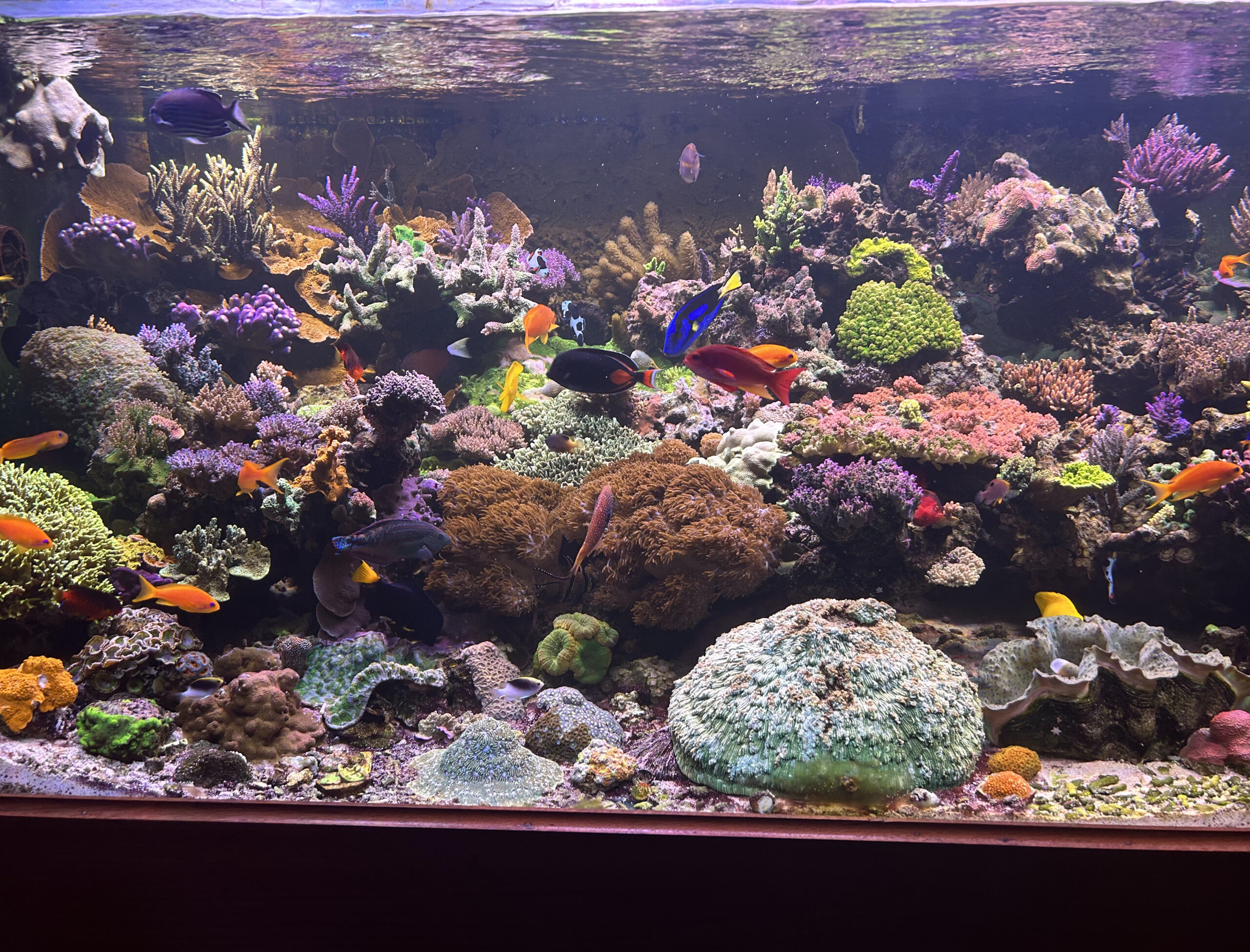
Essential flow
Flow is important because corals are sedentary, and as a result of being stuck in one place, it is necessary for food, nutrients, and other useful material to come to them. Flow determines if and what food comes to a coral since it can’t move to capture its food, and this is also the case for nutrients. If there were no flow the coral would quickly use up the food, and nutrients surrounding it, and would cease growing once these were used up.
Flow also removes the waste that the corals produce as well as waste products and detritus that settle on and around the colony. If inadequate flow is present detritus can build up around the coral which may allow harmful bacteria to thrive. Lastly, when corals spawn, flow moves the gametes away from the mother colonies and hopefully to adequate places for settlement. Flow is also essential for driving photosynthesis and respiration, two critical processes for coral survival. Because so many factors related to flow are essential for a coral’s health it is easy to understand why having adequate flow is so important for healthy corals.
What is adequate flow, and how can it be produced in a reef tank? Flow or water movement can be considered in several different ways including turbulence, surge, laminar flow, and gyre. Each of these is produced in different ways and each has a different effect on the corals. Turbulence is when random water movement results from when water comes into contact with either another current of water or a solid object. In most of our tanks, we have microturbulence that is the result of when the flow from two powerheads comes together or when the flow contacts live rock or corals causing it to change direction. It is one of the best types of water movement, as it keeps dead spots from occurring and keeps things moving around the corals in a random pattern.
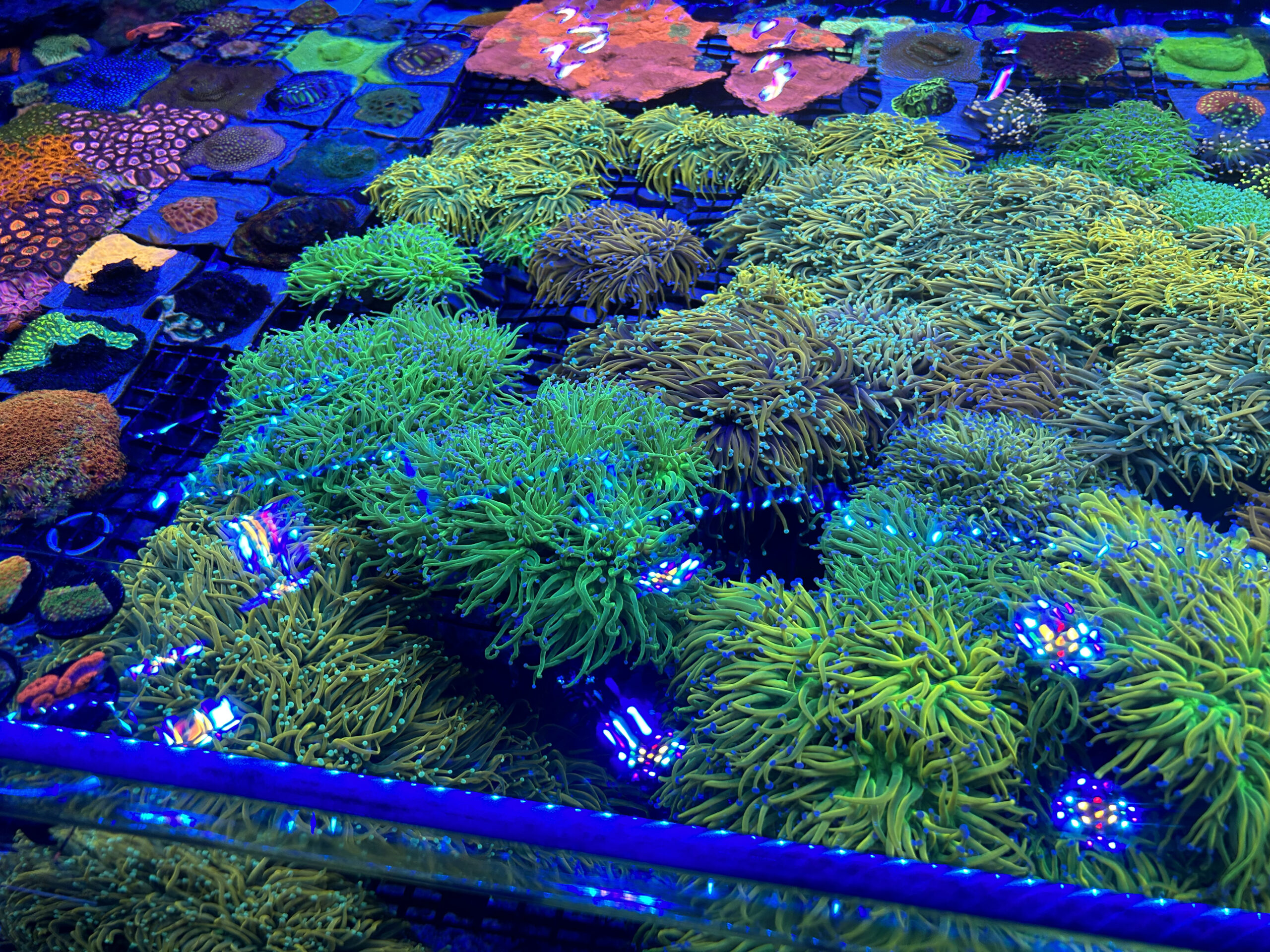
Surge
Surge is another type of flow and it occurs when water moves back and forth in a semi-constant pattern. If you have a soft coral or Gorgonian tank, this type of movement causes the polyps or blades to move one way for a while and then switch and move back the other way. This type of movement can be produced by having powerheads placed at opposite sides of the tank alternating their being on or off with one another.
The most familiar type of water movement in most tanks is laminar flow. This type of flow is unidirectional and is what we see when water shoots out of a powerhead. It is the easiest type of flow to get in an aquarium, but in my opinion, it is the least useful. I say that as even when devices are employed that move the powerheads the flow is less random than the other types and if the powerhead is too strong it can either knock the corals around or even shear off the tissue, but if it is too weak it only moves the water in a relatively limited area.
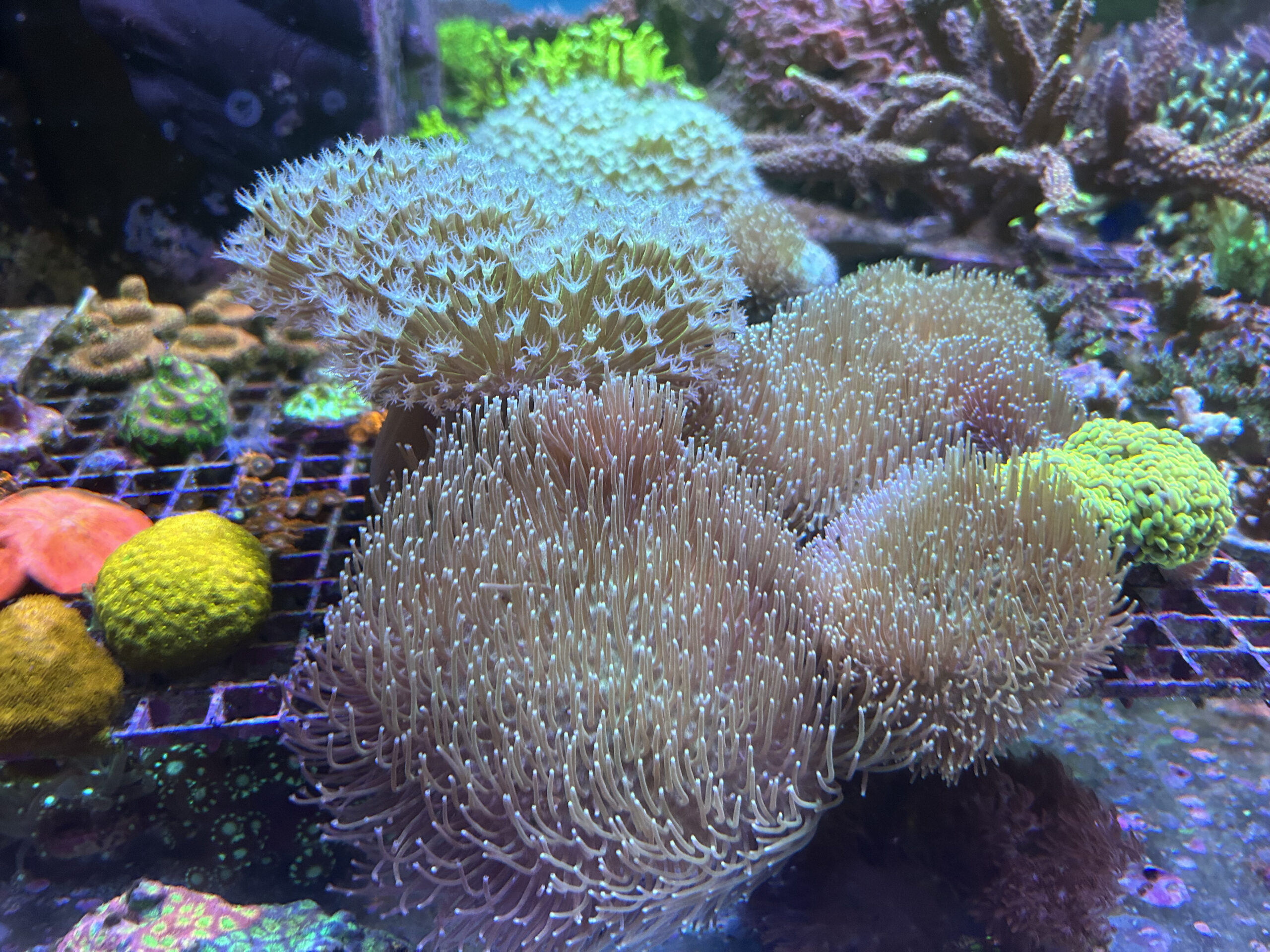
Gyre Flow
The last type of flow is the relatively recent type of water motion called a gyre. This type of motion is a robust circular motion of water and in it, a great deal of water is moved. This type of flow was talked about almost 15 years ago by Jake Adams, but only in the last few years has the technology caught up in the aquarium industry to produce it. This type of water movement is produced when “gyre” pumps are placed towards the top of one side of the tank and also on the bottom of the opposite side of the tank. These pumps move a large volume of water across a large cross-section and as a result of flow being produced going across the top on one side and the bottom on the other a circular pattern or “gyre” is set up which moves far more water than any other type of water movement system. As a result, anything that gets caught in the gyre, food, detritus, waste, etc., stays in the water column for an extended period of time.
Knowing all these different types of flow and how they interact and how they affect corals has led me to certain goals when designing and implementing the means for optimal flow in my systems. First, I want the flow to remove as much detritus as possible from around the corals themselves. I also want this flow to keep the detritus in the water column for as long as possible with the goal being to have it removed from the main display and into the overflows and sump so that the mechanical filtration and protein skimmers can remove it. This flow not only moves across the corals but also moves a lot of water on the bottom of the tank.
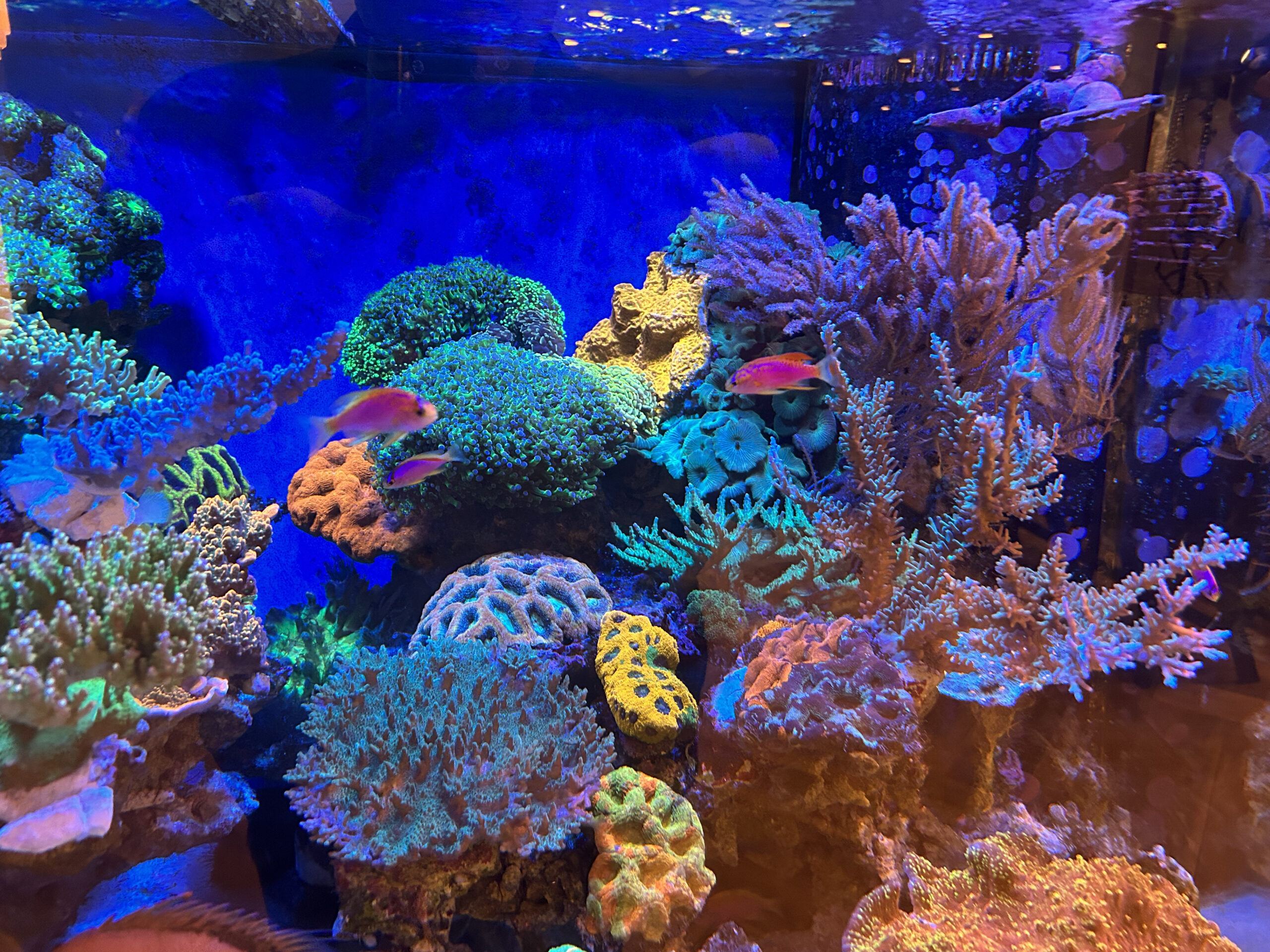
Second, I want this flow to be somewhat random so that no dead spots occur. Third I want this flow to be controllable so that when the fish or corals are fed the flow can be slowed so that the food is not immediately pushed out of the tank. Lastly, I want the flow to optimize surface agitation so that CO2 can be driven from the tank and replaced with oxygen. Since getting as much flow as possible is the goal all we need to do is throw as many powerheads into the tank as possible and the problem is solved. Sadly no.
While more powerheads will indeed produce more flow, they will also produce more heat and noise, be more unsightly, leave more wires dangling about, and require regular maintenance. And if the goal is to create a massive gyre or turbulence they need to be coordinated. They also can’t all be laminar flow-producing, as too much of this can just shear off tissue if it is too intense. Lastly, if the tank is not bare-bottomed, then concessions need to be made so that the substrate is not just blown about and over the corals.
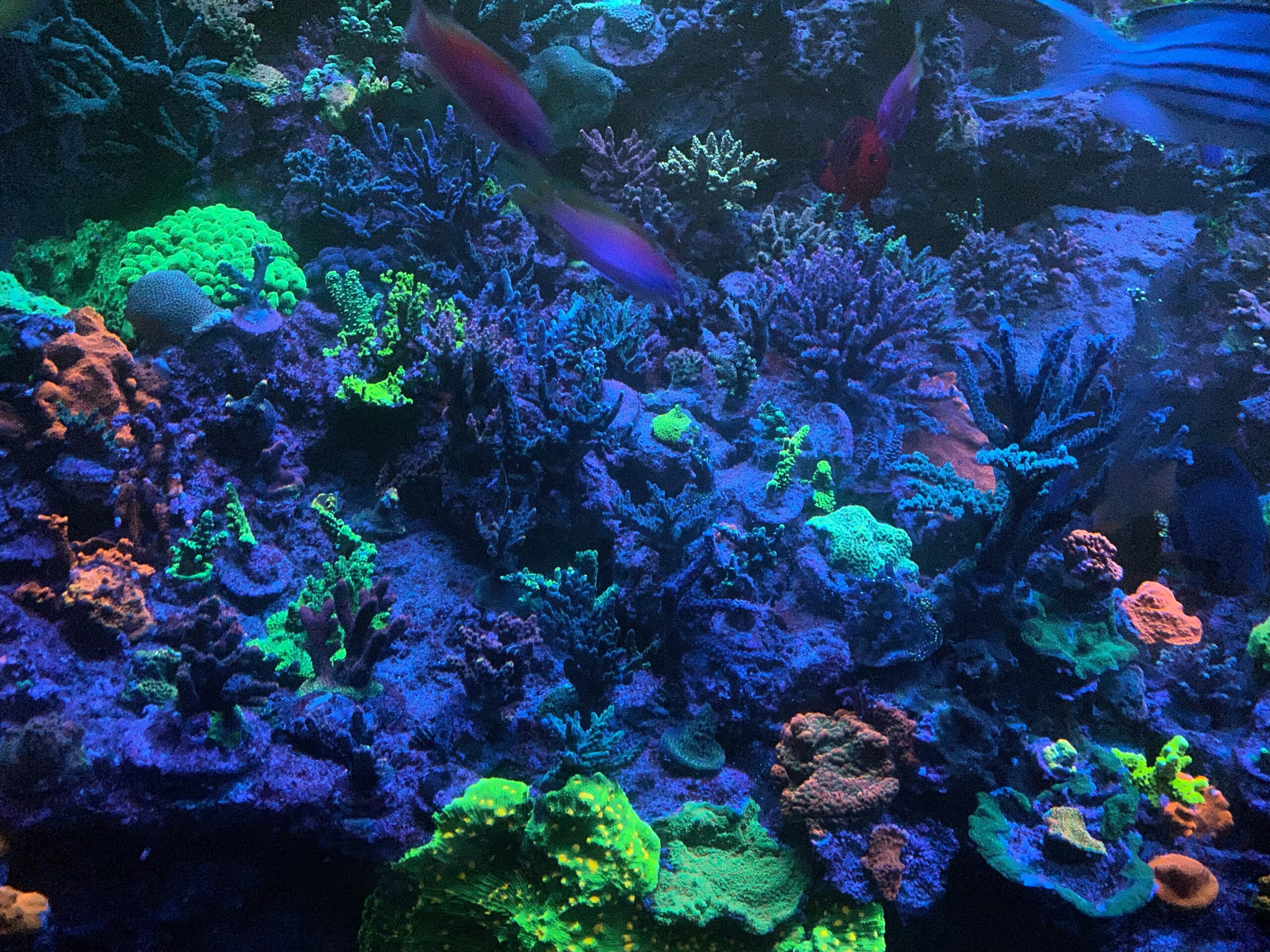
Flow data
Recently I got the data from 20 tanks from hobbyists who I feel have great tanks with healthy rapidly growing corals. When looking at the flow rates in their tanks they ranged from 40 to 120X the tank’s volume in flow with an average of over 85X times the tank’s volume. Getting the flow to over 120X was not too high, based on what their numbers were. From these findings, I now suggest that the flow within any reef tank be at least 50X the tank’s volume. That is if a tank is 100 gallons in size there should be at least 5,000 gallons of flow per hour in it. With this level of flow the goals of what flow can provide should be met, but obviously, even more flow than this would be even better.
Flow is one of the least talked about aspects of a reef tank, especially for hobbyists just starting out. But it has been my experience that when flow is good in a new tank it usually does better in the long run. Providing adequate flow is one of the least expensive aspects of starting a new tank and one that pays huge dividends. So if you are going to try and save money, do not do so by reducing flow.




